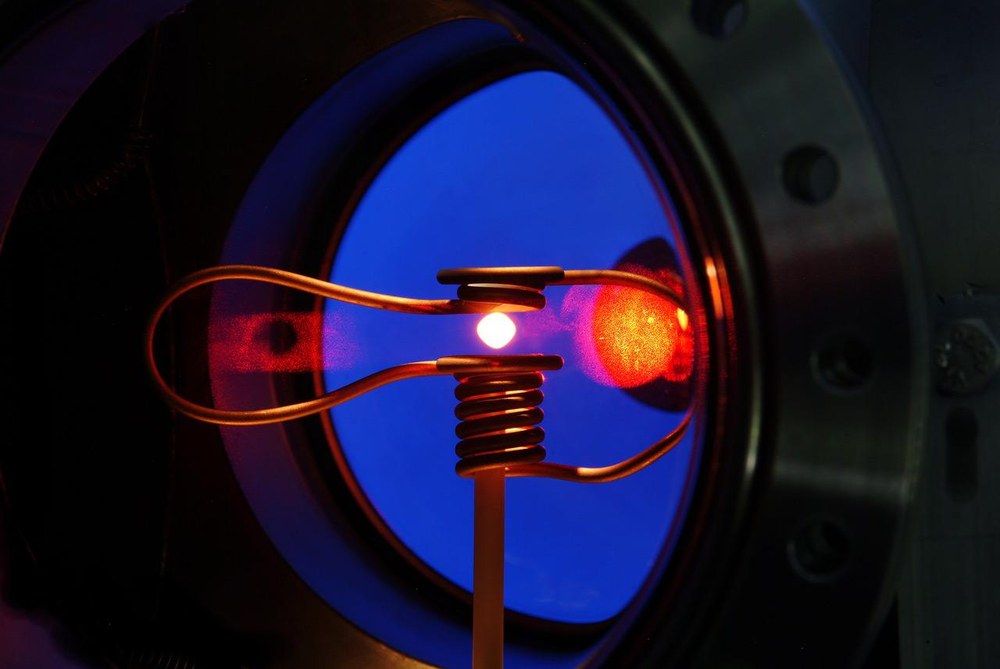Electromagnetic Levitation
Crucible-free processing techniques allow investigations to be carried out on melts of materials with a high melting point or chemically reactive melts in which undesirable chemical reactions occur between the melt and crucible materials during conventional melting in a crucible. By avoiding heterogeneous nucleation on crucible walls or other foreign phases, crucible-free processing techniques also make it possible to subcool melts below their melting point to the metastable state of a subcooled liquid. When using levitation melting techniques, the free-floating samples are accessible for various diagnostic methods, such as pyrometric temperature measurement, observation with video cameras or scattering experiments with neutron or synchrotron radiation. This allows the investigation of the non-equilibrium solidification behaviour of supercooled liquids, the measurement of thermophysical properties, such as density or surface tension, as well as the investigation of the atomic structure and atomic dynamics of the melt as a function of temperature.
One of the levitation melting processes used at the Institute of Materials Physics in Space is the electromagnetic levitation technique. Here, a massive electrically conductive sample with a typical diameter of 5-10 mm is placed in an inhomogeneous alternating electromagnetic field, which is generated by a levitation coil through which a high-frequency alternating current flows. This induces eddy currents in the sample. The heating of the sample caused by ohmic losses makes it possible to melt the sample. At the same time, the interaction of the magnetic dipole moment of the sample through which the eddy currents flow with the inhomogeneous alternating magnetic field of the levitation coil results in a force acting on the sample. If this force is adjusted in such a way that it compensates for the force of gravity, the sample can be processed in a free-floating solid and liquid state. To remove excess heat, the samples are processed in a high-purity inert gas atmosphere.
The Institute of Materials Physics in Space has several electromagnetic levitation facilities equipped with various diagnostic methods. These include mobile facilities for carrying out scattering experiments with neutron or synchrotron radiation at external radiation sources. The work carried out in the Institute's ground-based levitation facilities complements similar levitation experiments under microgravity conditions during parabolic flights (TEMPUS) or in an electromagnetic levitation facility (EML-ISS) provided by ESA on the International Space Station. The process under microgravity conditions has the advantage that stable positioning of the samples can be achieved with alternating electromagnetic fields that are several orders of magnitude weaker than on Earth, which reduces fluid flows in the samples, for example, and enables the samples to be processed in a vacuum

